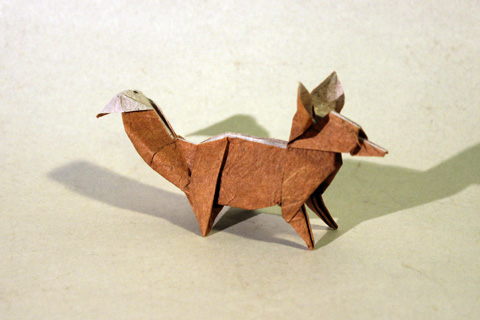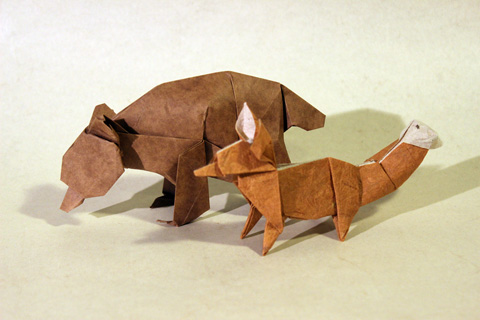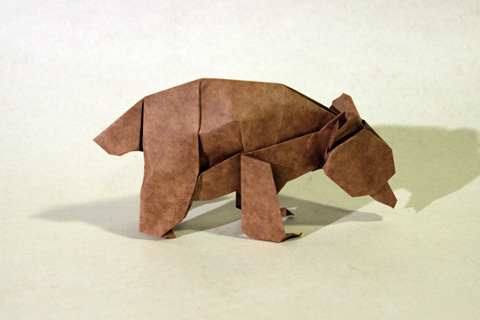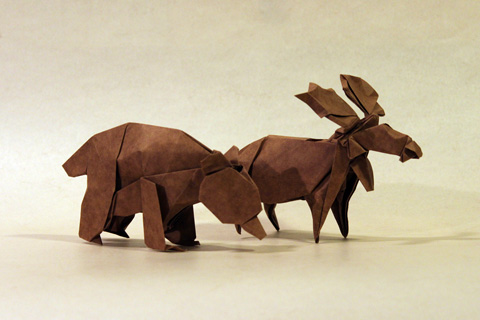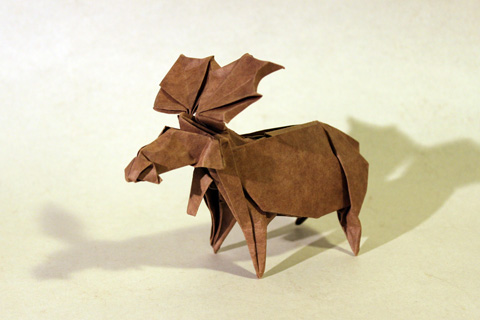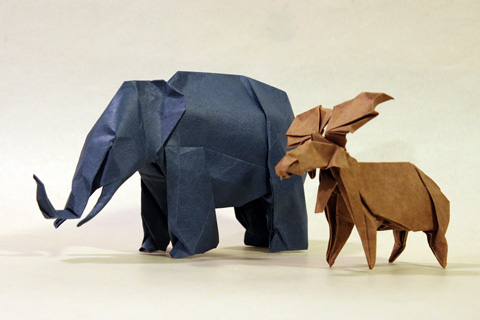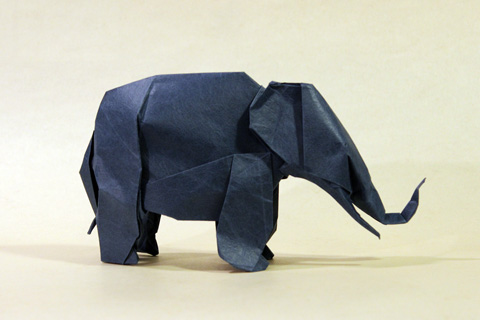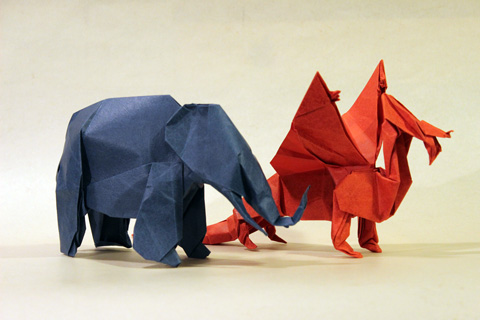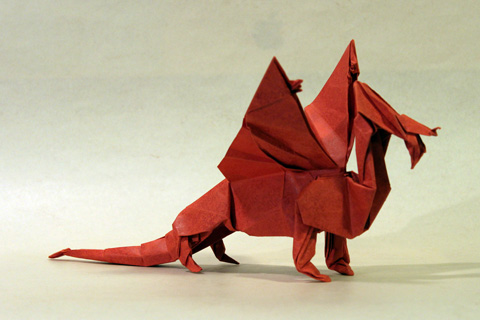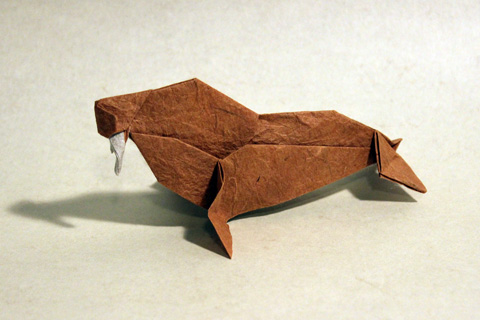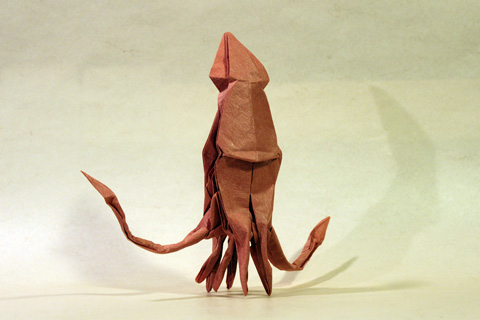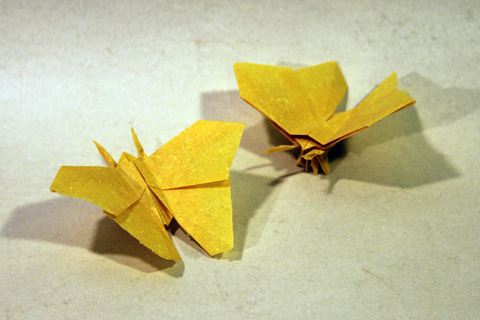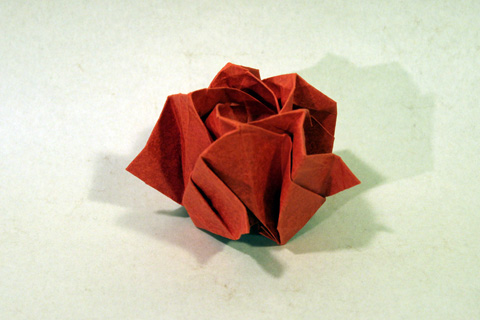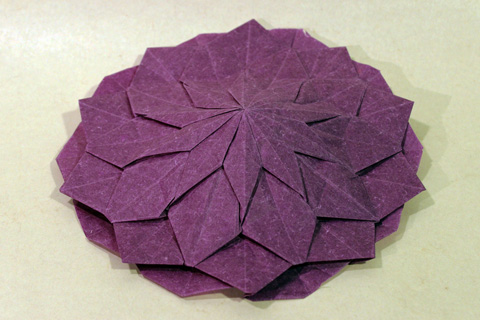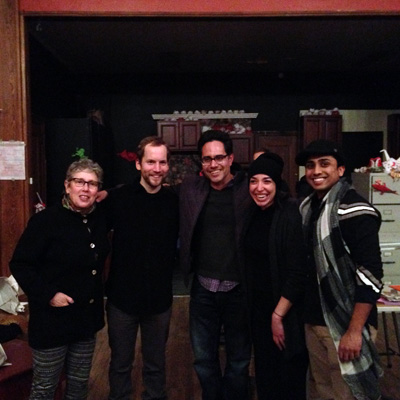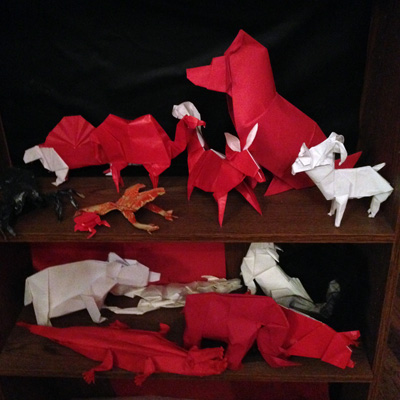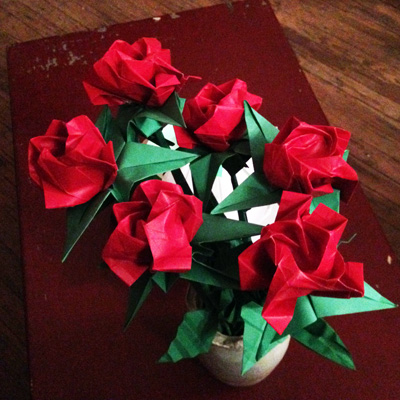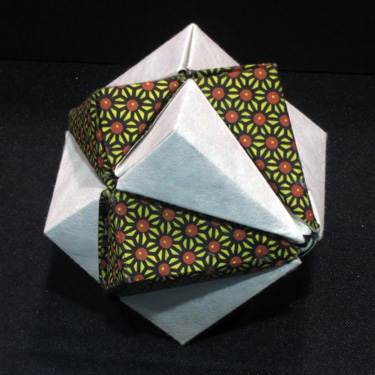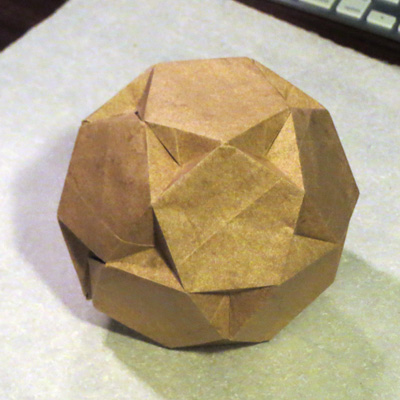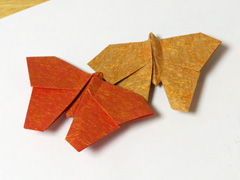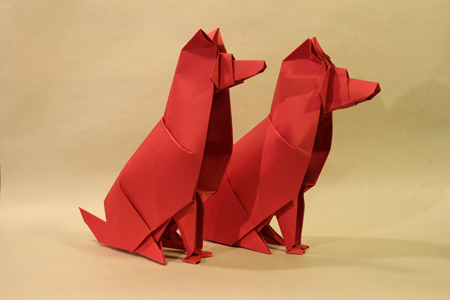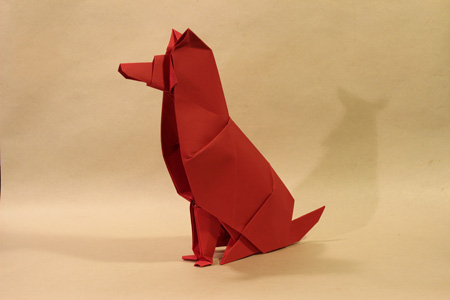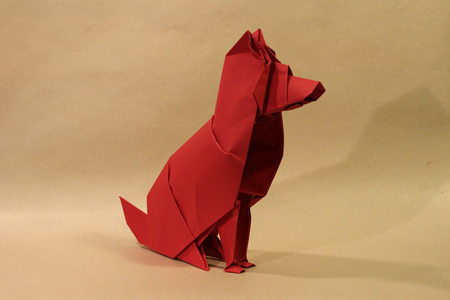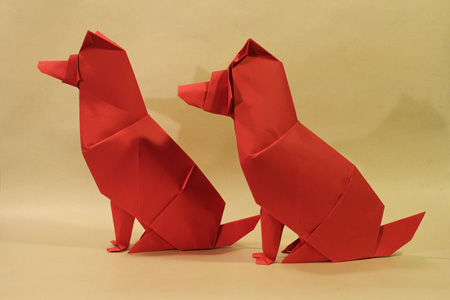Back around Xmastime Brian Webb of OrigamiShop.us gave me a bunch of paper, to fold a bunch of things. Well this project is now complete (or at least the first batch); all that remains for the weather to clear up so I can get out to the post office. I folded some nice models and discovered some interesting papers along the way. Here’s the rundown.
Bear Hide – This was the first paper I tried, and the first thing I folded, naturally enough, was a Bear. Next was a Moose. The Bear was from an 8” square and the Moose from a 16” square. This paper looks and feels a bit like plain brown paper wrapping paper, except it’s thicker and tough, much link Wyndstone. Very foldable, perfect for models like these. An excellent paper, didn’t even need to wetfold. I’ve already used up my stock; must reorder.
Grainy – this came in a packet of 50cm sheets in a variety of colors. It’s another very nice paper. Bright colors, a bit on thick side, but not super-thick, with a bit of shine and texture on the surface, and springiness in the folds. I folded one of my Roses out of a 8” square. It came out very nice, better than the ones I usually fold out of kami. I also folded a Dragon from a 16” square. It also came out really nice. I had to wetfold a couple spots where the layers built up. Another really excellent, foldable paper.
Thai Duo – this paper is on the soft and thick side, and has a fuzzy texture. One side is either brown or blue, and the other is white (or at least a whiter shade of pale). I’ve been looking for a long time for a good paper for two-colored models, and this quickly became my favorite, at least for brown and blue subjects. I only had one 16” square so I divided it into four 8” squares. I made two foxes and two walruses and they all came out great, even at that small size. Again, no need for wetfolding. Imma order some more of this in brown to make a larger fox and some in blue to make a narwhal. Having finally found the right paper I can put those models to rest.
Rhino Hide – I made an Elephant because I don’t have a design for a rhino and didn’t feel like coming up with one. I used a 12” or 14” square. Rhino hide is another really good paper. A lot like Grainy but maybe a bit thinner, shiny one side.
Lokhu – this was paper I didn’t know before. The paper is thin, with a bit of a fibrous sheen to it, a bit soft, very interesting. I folded a Giant Squid out of 19” sheet. The model has a lot of layers which made it appropriate for thin paper. I had to wetfold it at the end so the tentacles would keep their curl, but it turned out great.
Agua – this is another paper I didn’t know before. It’s very beautiful, and thin but strong, with a texture on one side and kinda waxy on the other, and very crisp to fold; it almost resembles origamido paper. Normally I don’t work in style that requires this kind of paper; my preference runs to the ticker side. So I tried a few models to see what would work. I folded one of my roses, which came out nice enough, but perhaps not as soft and sculptural as I’d have liked. I folded one of my Penflower tessellations. That came out quite striking looking. Getting warmer. Then I tried on of my new Butterflies. These came out absolutely fantastic. Just the right kind of model to take advantage of the thinness and crispness of the paper. The winds are nice and sharp and the texture adds a lot to the appearance. The paper was thin enough to the legs and antennae, even working from a 6” square.
There’s lots of other papers still to explore, so I hope to have an update in the springtime. Meanwhile, thanks Brian!
